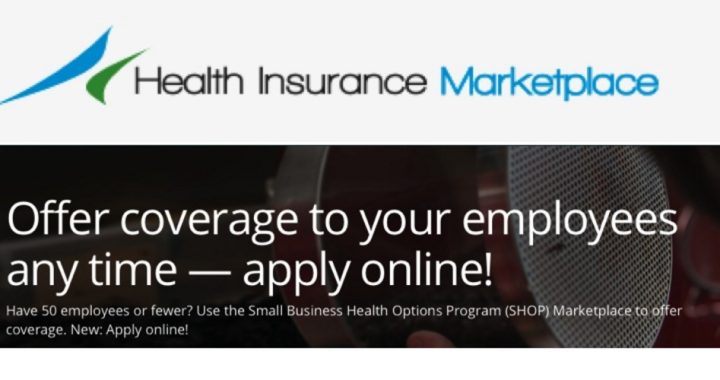
Enrollment in ObamaCare’s individual insurance exchanges has been far from a roaring success. Now comes word that the law’s small-business exchanges are also vastly underperforming for reasons ranging from computer glitches and delays to the very nature of the exchanges.
The Small Business Health Options Program (SHOP) was supposed to enroll two million Americans this year, according to the latest Congressional Budget Office (CBO) forecast. The Obama administration has been typically tight-lipped about enrollment numbers for the federal SHOP exchange, but it’s known that as of June, just 76,000 people were enrolled in the 18 state-run exchanges. It seems highly unlikely, therefore, that nationwide enrollment even came within shouting distance of the CBO’s projection.
Things are hardly looking up for 2015. According to the Centers for Medicare and Medicaid Services (CMS), the SHOP section of Healthcare.gov had just 200,000 visitors in its first week of open enrollment for 2015, while the individual-exchange section got over 1.5 million visitors. John Arensmeyer, founder and CEO of the pro-ObamaCare Small Business Majority, told the Washington Post, “We are not expecting a massive [enrollment] surge.”
The idea behind SHOP was to allow small businesses to band together to obtain health insurance, providing a larger pool of insured individuals and thus reducing premiums and offering more plans. The program was also designed to give employees a choice of plans, something rarely offered by small-business owners.
SHOP was “supposed to be the one thing in Obamacare that was maybe, kind of, good for small business, the sector undeniably most impacted by the insurance premium increases that were inevitable with the new law,” Jean Card blogged at U.S. News & World Report.
So what happened to this seemingly beneficent (albeit unconstitutional) program? Why is it having such a difficult time attracting customers?
First, as with the federal individual exchange, SHOP has been beset with technical difficulties. When it launched last year, it couldn’t even enroll people; that process still had to be performed manually. At the time, the administration said the website would be fully functional by November 2014, and while it can now enroll people, it still has its problems. For example, the website asks employers how long their new employees must wait before becoming eligible for insurance. The ACA allows for a waiting period of up to 90 days, but the website’s maximum is 60 days. This, of course, has left employers confused and frustrated. (They were previously confused and frustrated by the website’s requirement that they provide an employee number for each employee they wanted to offer coverage — an obstacle for small businesses that have no need to number their few employees to identify them.)
Still other problems plague insurance brokers and their clients. The Post cited the case of Cleveland-area broker Sam Fiorentino, a man well enough versed in the ACA to train other brokers in how to navigate it:
First, the Web site did not recognize his password. Then, a fishing buddy who runs a small machine-tool cutting company told Fiorentino that he wanted to designate him as his broker from a drop-down list on the site, but Fiorentino’s name did not appear. After many calls to federal phone numbers, Fiorentino discovered the problem: The computer system was not accepting his “national producer number” — a kind of ID number the Web site requires — because an insurance agent in Michigan had already entered his number by mistake. A week after finding the root of his problem, Fiorentino still has not been able to get it fixed.
“Now my clients can’t find me. Therefore, they can’t buy from me right now. I might as well not be in business,” he said. “Unbelievable.”
Second, the Obama administration’s ongoing SHOP delays, as with its postponement of so many other ACA provisions, haven’t helped. Besides putting off creating a fully functioning website for a year, the administration also delayed SHOP’s feature allowing employees to select from a list of plans their employers were offering — first for one year and then for still another. In other words, until January 2016 at the earliest, employees getting coverage via SHOP are stuck with the single plan their employers were permitted to offer.
Third, SHOP was created primarily to serve the political objective of passing the ACA, not to meet a real need, and therefore was not well-thought-out. Hence, it requires, in Card’s words, “a ridiculous 70 percent minimum employee participation rate” and “doesn’t have a critical mass of insurer participation.”
SHOP exchange plans, moreover, are no great shakes. The Government Accountability Office (GAO) recently reported that SHOP premiums “were generally comparable to premiums for other small group plans offered within a state but outside of the SHOP,” while the Post found instances in which SHOP plans had either significantly higher premiums or smaller physician networks than comparable non-exchange plans. And with SHOP only offering employees a single plan to begin with, it’s hardly worth their — or their employers’ — while to use the exchange.
Then there are the tax credits for employers offering exchange coverage, one of the biggest selling points of SHOP. But a closer examination of the matter reveals that the credits (1) only go to a select few employers, (2) “may be too small and administratively complex to motivate many employers” (GAO report), and (3) expire after two years.
Put it all together, and “you really run out of reasons to go into the SHOP,” Delaware insurance broker Nicholas Moriello told the Post.
The point of SHOP, however, was never really to help small businesses, observed Politico:
“Small businesses weren’t screaming for this,” said Gary Claxton with the Kaiser Family Foundation. “I don’t think the demand was there.”
Yet in the debate over the healthcare law, Senator Dick Durbin (D-Ill.) popularized the SHOP concept and used it to persuade moderate Democrats to endorse the bill, recalled John McDonough, then a health advisor to Senator Ted Kennedy. The idea just never drew particularly strong support in Congress or from the policy community. It was funded with a tiny fraction of the resources dedicated to helping people buy insurance in the individual exchange.
“The small business piece was always more hat than cow — politically attractive and convenient, and not really cognizant of the realities of health insurance markets,” McDonough said.
That pretty well sums up the rest of ObamaCare, too.



